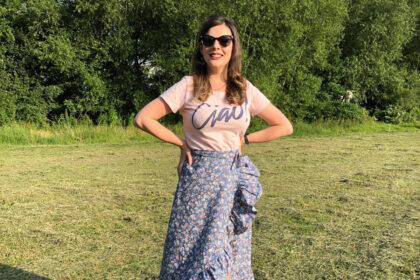
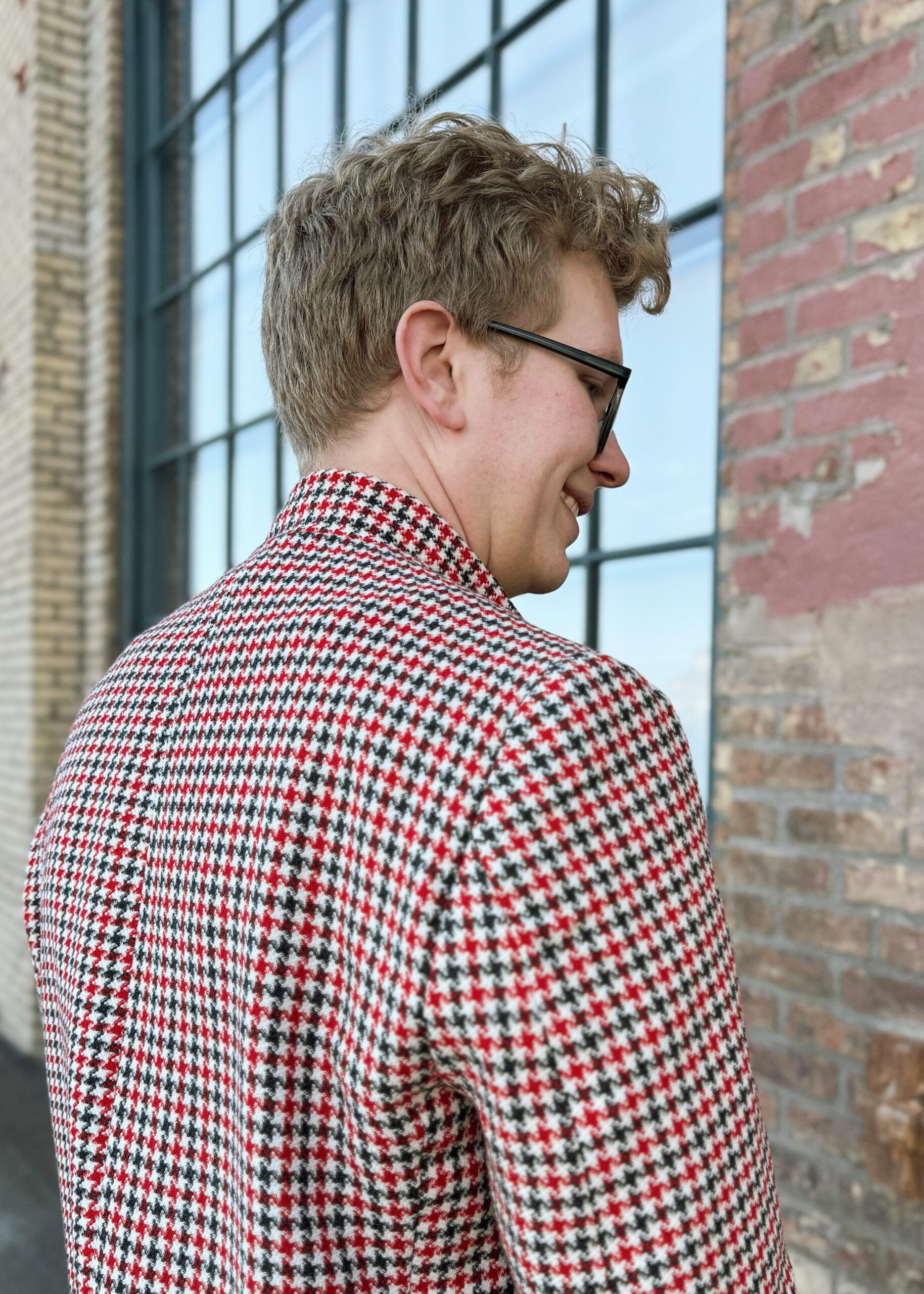
“Did I ever tell you that this here jacket represents a symbol of my individuality and my belief in personal freedom?”
– Wild at Heart
The making of this jacket for Simon coincided with our local cinema running a David Lynch season; we attended every film screening and I had such a wonderful time seeing some of my most beloved films on the big screen for the first time. Simon now frequently repeats his favourite quote from Wild at Heart, which really does match his attitude to his new favourite jacket!
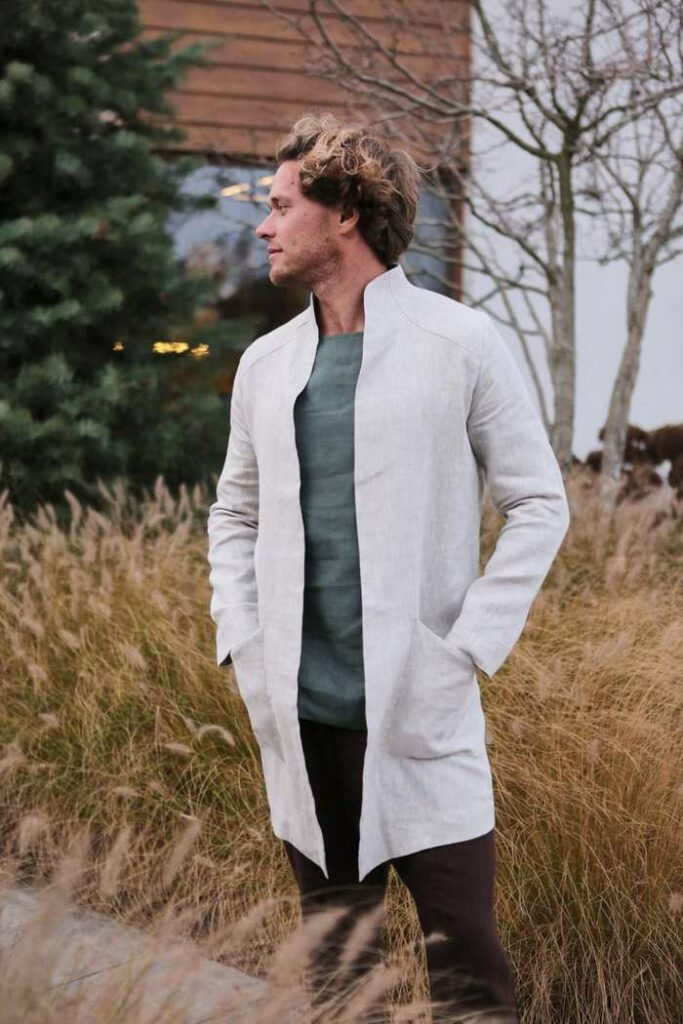
He had come to me earlier this year with an image of an RTW jacket he liked and a polite request for me to make him a jacket of a similar style. He is pretty much the only person in my life who is allowed to do this 😅 We worked together on picking the elements he liked and discarding any he didn’t. He wanted to keep the overall slimline silhouette, the stovepipe collar and the mid-thigh length, whereas he wasn’t too keen on the patch pockets or the raglan sleeves. After a bit of hunting for suitable menswear patterns, we eventually landed on Vogue 1930, with the plan to make various modifications.
Image source: Black Ficus
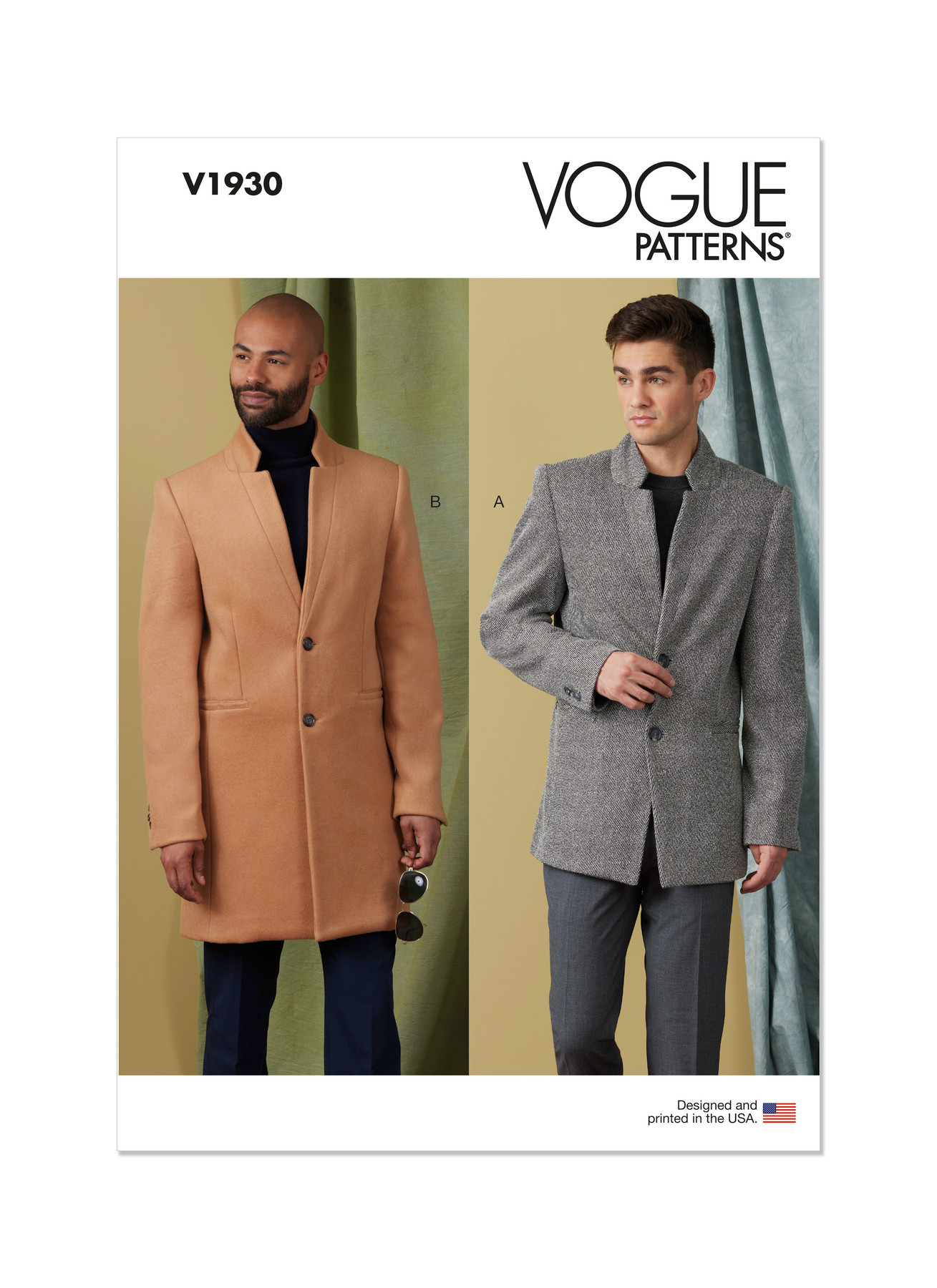
Vogue 1930 is a slim, tailored menswear jacket, which is fully lined and comes in two lengths. There is a notched collar, back vent, two-piece sleeves with a button placket, and single welt pockets. It is recommended to use structured, midweight wovens, such as wool blends, gabardine and denim — I could see a wool melton version being very versatile. This served as a pretty good base, but I needed to draft several new pattern pieces to better emulate his inspiration image. This included: a new jacket front in the main fabric and facing, to allow the removal of the lapel collar; a back neckline facing for purely aesthetic reasons, as I think this elevates an outerwear garment; new sleeve cuffs, to accommodate the removal of the button placket; and a new stovepipe collar. Phew! I used a size 40 and then after tissue-fitting these new pattern pieces, I had to make a handful of adjustments to get a better fit before making a muslin: mainly lengthening the entire jacket body by 1″, lengthening the sleeves by ⅝” and also doing a ¾” broad back adjustment. Once Simon was happy with how the muslin fit, I moved on to cutting into the proper fabric.

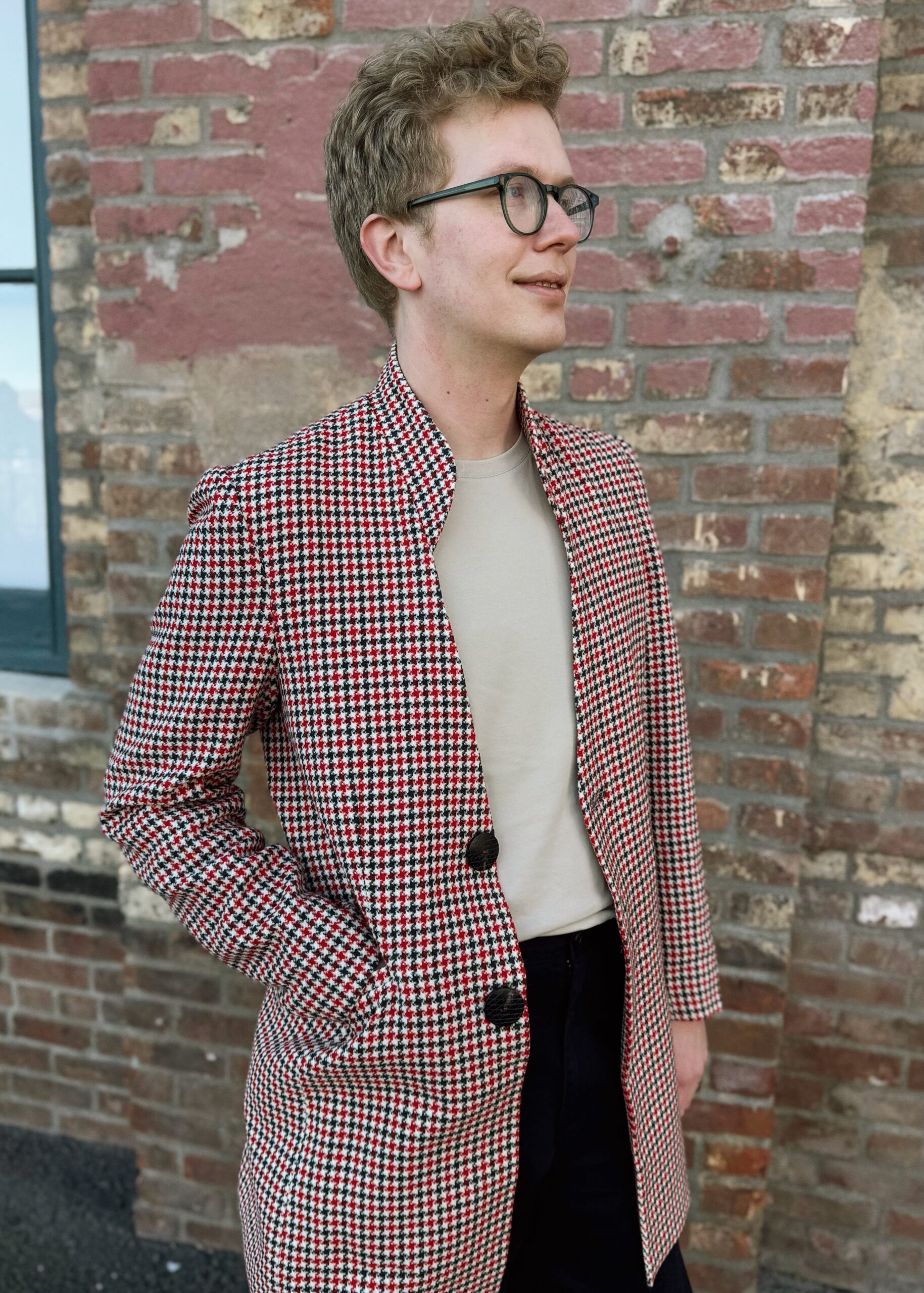
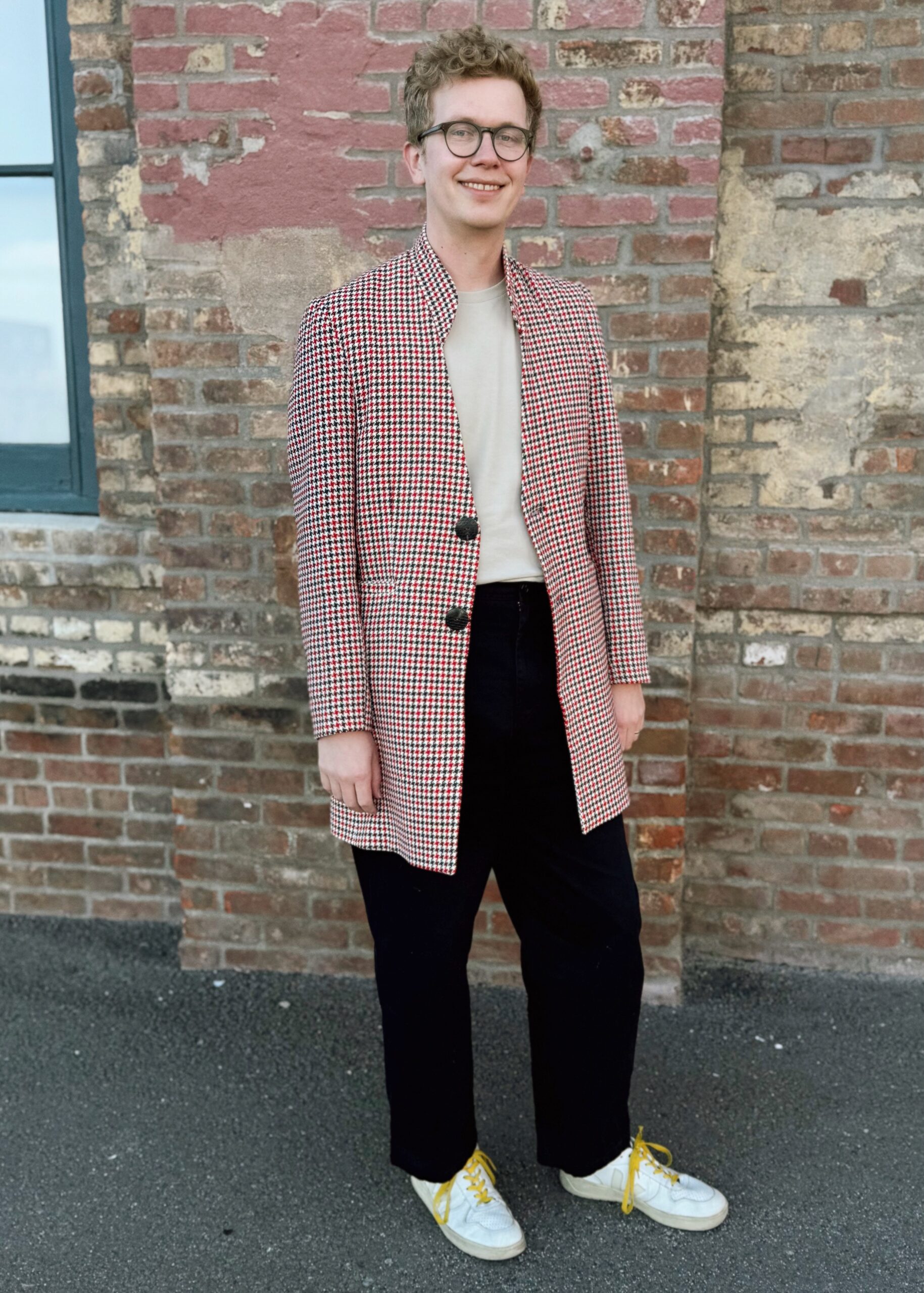
All of the fabric and notions for this project came from Stonemountain & Daughter Fabrics, which is just a short drive away. I swear, 99% of our trips there are for me to get some thread or a zip, yet Simon ends up spying some fancy fabric and becomes besotted — like when he spotted some deadstock indigo denim and bam, I was suddenly working on a boilersuit! This time, he spotted this medium-weight deadstock suiting from a British designer brand. This is a 90% wool/10% polyester blend, which made it lovely to press with my tailor’s clapper. I think the streamlined style of this jacket helps to modernise the houndstooth print, as does the textured hand of the fabric. The drape is pretty structured, with a bit of flexibility. It frayed like no tomorrow, so accurate welt pockets caused a huge amount of personal pain for me. This jacket was quite literally made with blood, sweat and tears! We picked up some navy silk habotai for the lining, as it is breathable, lightweight, and slippery enough to slide his arms through the sleeves, but not so slippery that I wanted to chuck it out of the window while cutting (looking at you, silk charmeuse). As a finishing touch, Simon also picked out these extra-large horn buttons, which have a carved, crosshatch design.


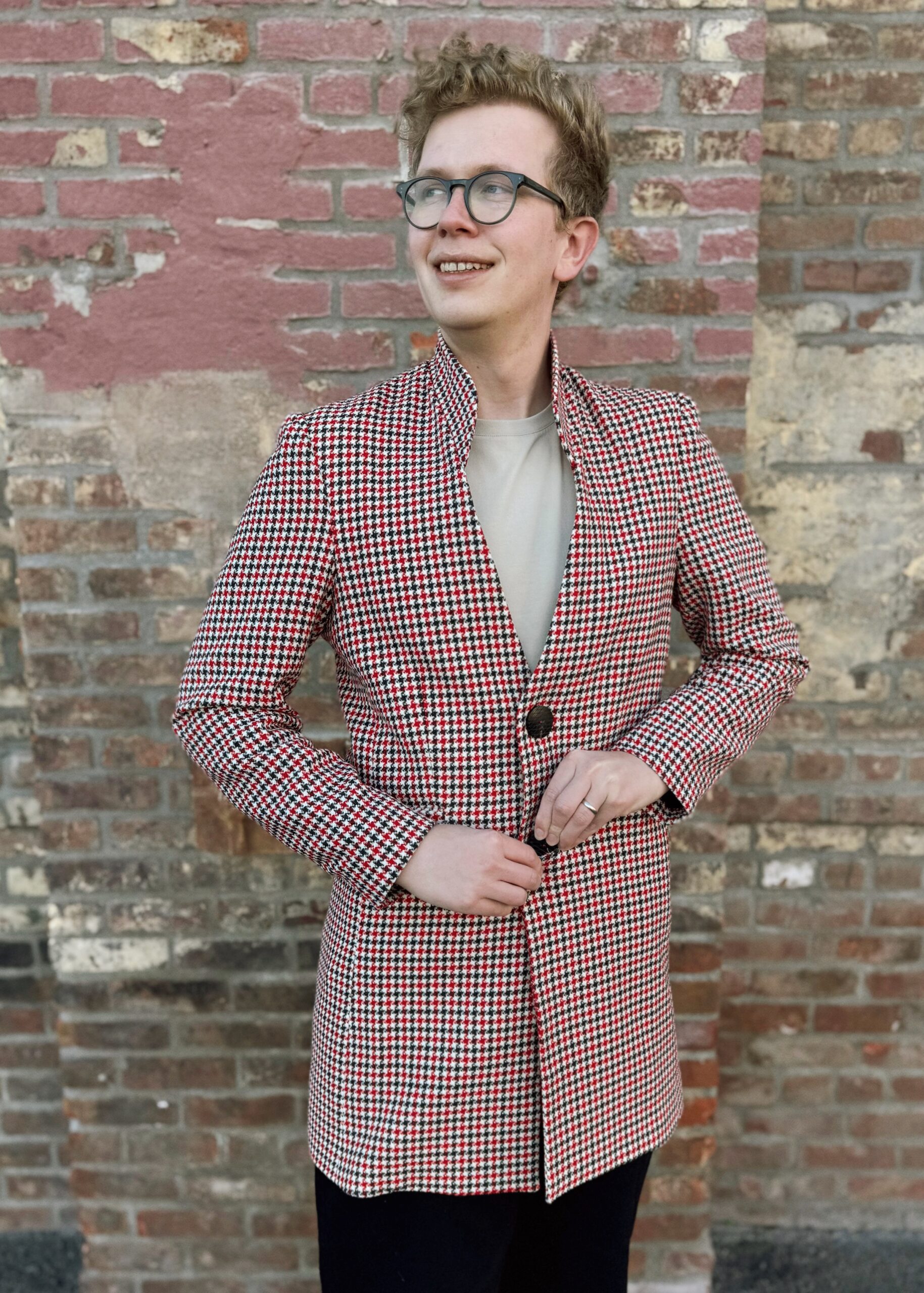
Now for some close-ups of the details!
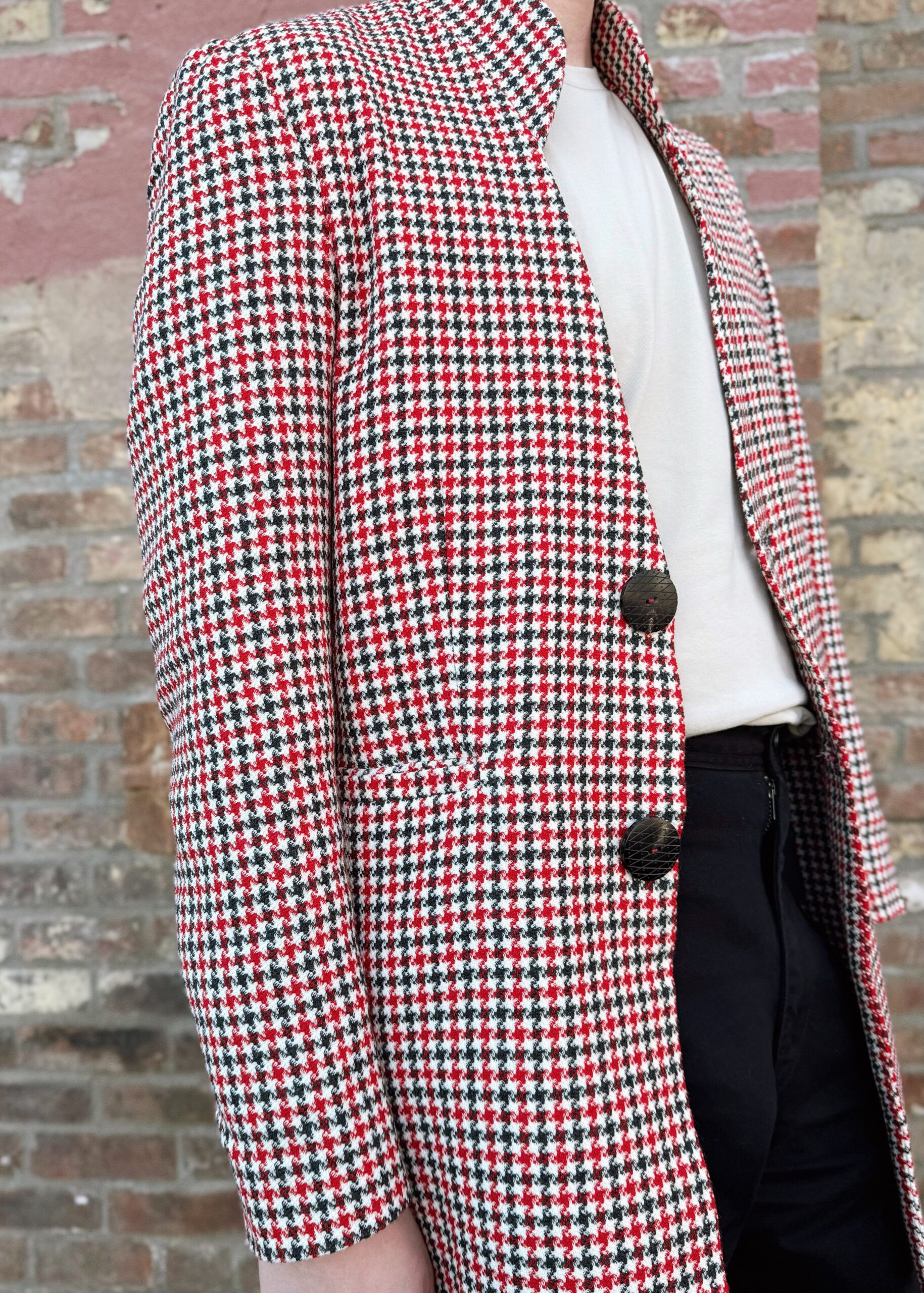
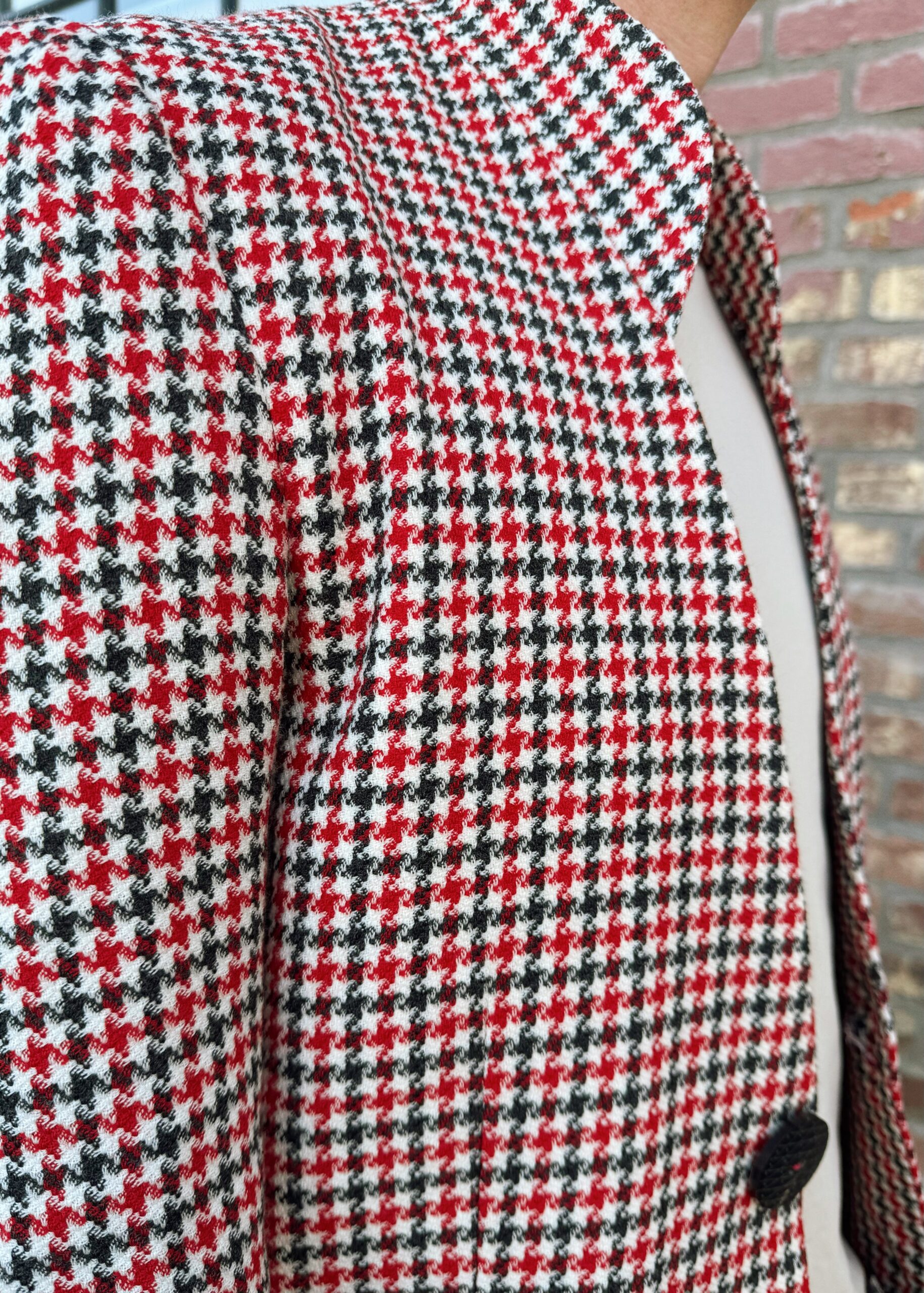
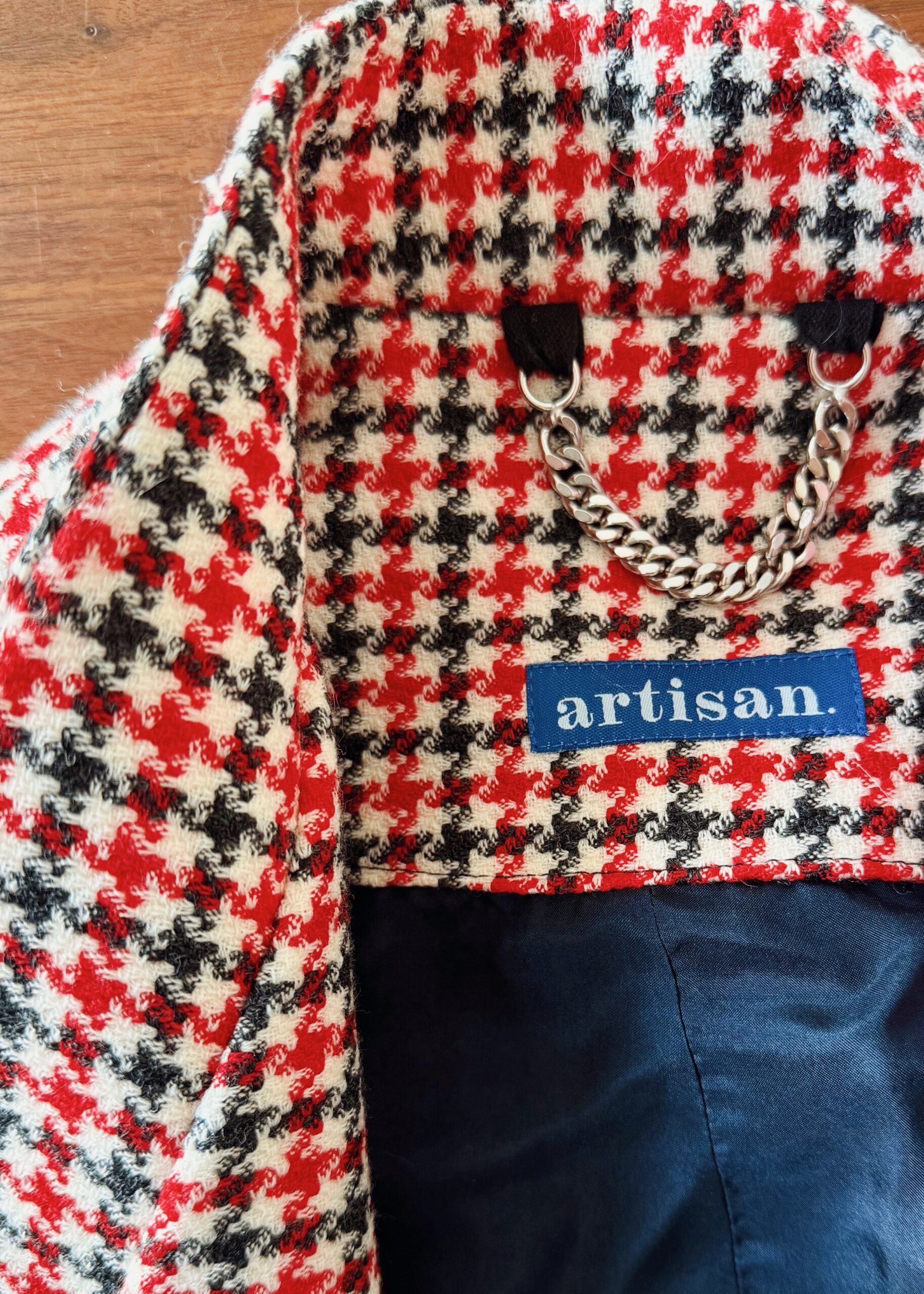
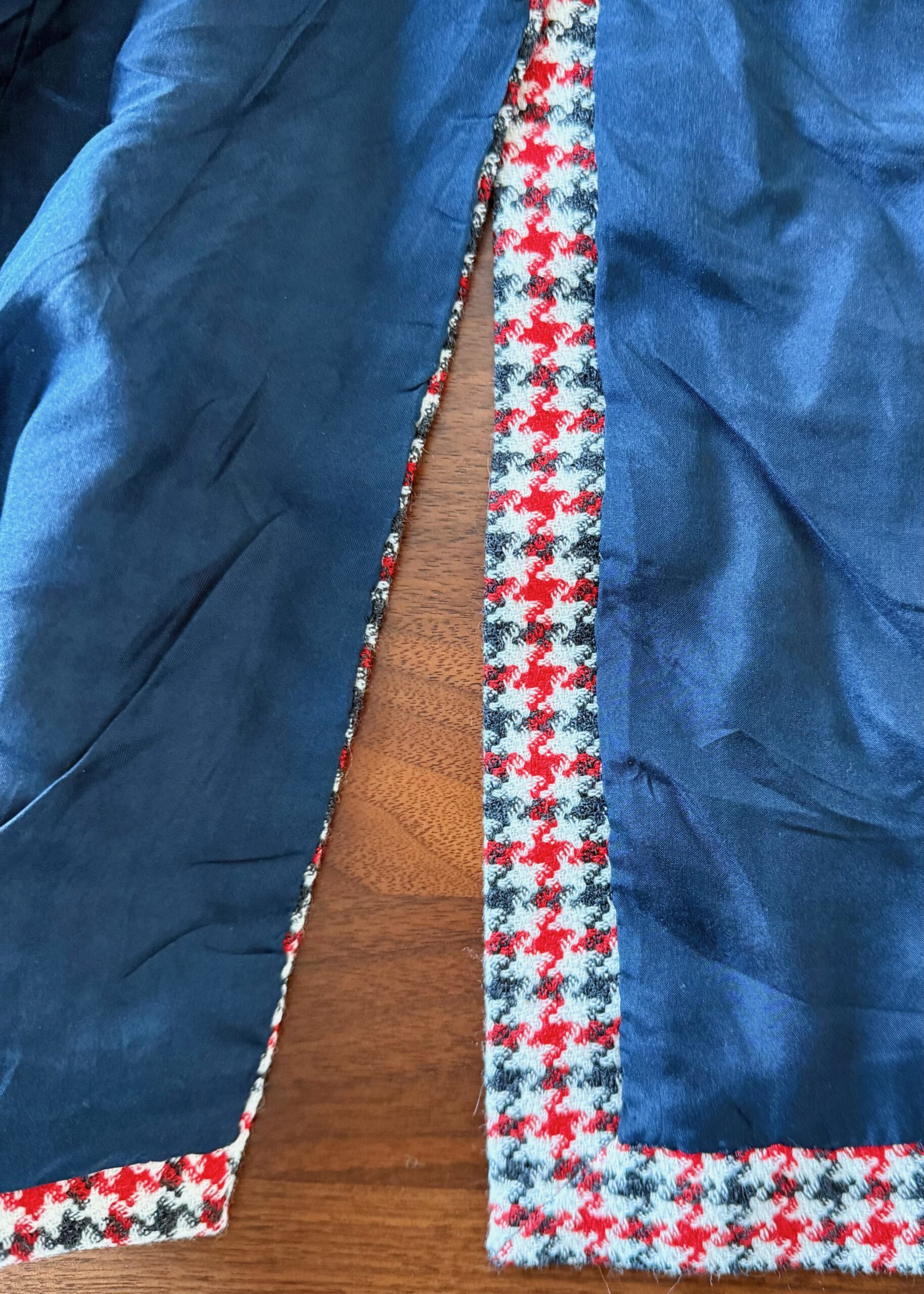
This was already shaping up to be quite a slow sew, what with the drafting of several new pattern pieces and the making of a couple of muslins, but I did also take my time sewing this jacket up, as it was quite a complicated pattern. I didn’t follow the instructions too closely, as I was doing my own thing at several different points, but I followed the general gist of the construction order. Simon was pretty specific about wanting a more softened, relaxed look for the jacket, so I skipped the shoulder pads and used a lighter-weight interfacing. The steps to install the single welt pockets were easy to follow, and I am really happy we went for this style of pockets over patch pockets. I was also really happy with how well the sleeves eased into the armscye, there isn’t a pucker to be seen. I also chose to bag out the lining to get a super clean finish, so I used the techniques I had learnt from my Cashmerette leather jacket project and then hand-sewed the lining to the vent. Then disaster struck! The beautiful horn buttons Simon had chosen were too big for my automatic buttonhole foot… He has a knack for overcomplicating things. In the end, I used my zigzag stitch and bartack stitch to manually make buttonholes big enough, but it was a nerve-wracking experience as the final step. I think I did about six practice goes beforehand!
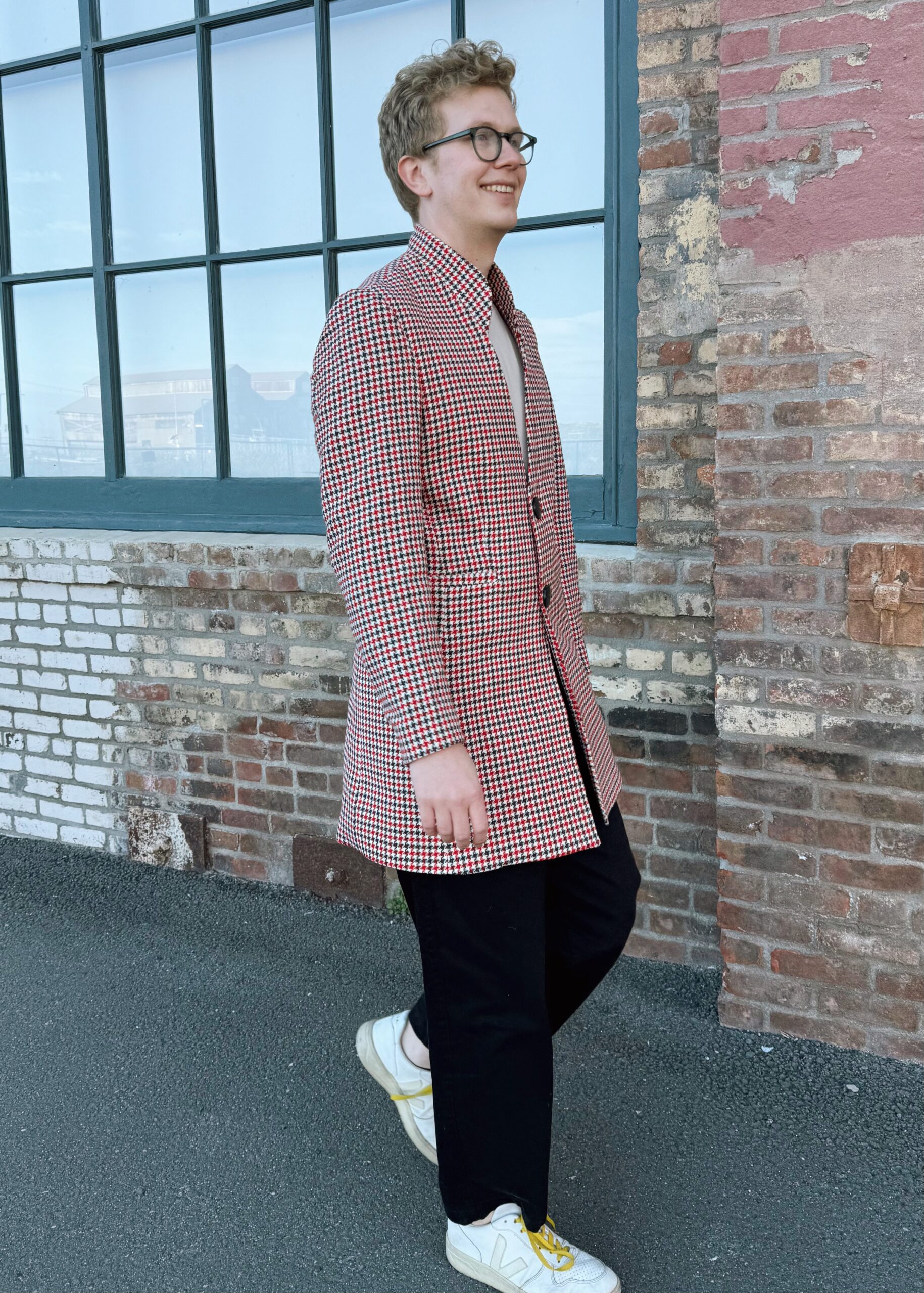
This was a very time-consuming make, but I felt really proud of myself when I finished sewing the buttons on. Simon has been wearing it pretty much non-stop, which shows how much he loves his new jacket, and he has received quite a few compliments from passersby and colleagues (granted, we are usually dressed fancier than most occasions call for in San Francisco, so we do tend to stick out) 😅 He is already requesting another version of this modified V1930 in a midweight linen with seams bound in Liberty floral bias binding for the cooler summer evenings, so stay tuned to see that at some point in the future. Every time he wears this jacket, it reminds me of all the fun we had going to the pictures this spring (even if Simon remains doubtful about Eraserhead!).
Vogue 1930 Men’s Jacket
Size 34 – 46
Chest: 34″- 46″
Waist: 28″- 42″
Hip (Seat): 35″- 47″
